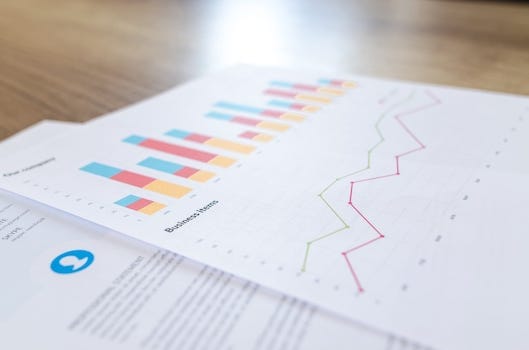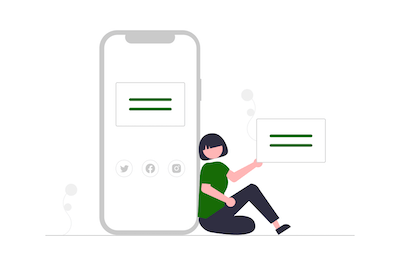The complete NFT Guide
NFT simply explained
May 18, 2021
Read time: 7 min | Natalie Hogh
What are NFT?
The crypto hype is big, especially NFTs are experiencing a lot of attention right now. But what are NFTs actually?
NFT stands for Non-Fungible Token and can be fundamentally defined as a non-exchangeable, unique krpytographic token. A token is a digital certificate stored on a secured and distributed database.
Admittedly, this definition doesn't really make you any smarter. Let's take a closer look at the whole thing. NFTs can arise and be created wherever virtual goods are traded as unique items. There are no limits or rules as to what counts as an NFT.
Examples of NFT include:
- Digital artworks
- Trading cards
- Music
- InGame items
- Memes
Especially in digital art, the NFT market is booming.
An NFT is, so to speak, a digital owner's certificate that states who the owner of this unique item or work of art is. NFTs are stored on blockchain.
So when you buy an NFT, it is recorded in the blockchain. But the artwork can still be downloaded and distributed by others on the net. So you don't own a physical object after the purchase.
So where does the NFT hype come from?
NFTs create something that has not yet existed on the Internet. Through NFT, virtual goods become scarce in real terms and a real owner can be identified. Thanks to the blockchain technology used, no forgeries can occur. Virtual art thus becomes a unique collector's item.
Digression: What are cryptocurrencies actually?
So are Non-Fungible Tokens a cryptocurrency? No, NFTs are not a cryptocurrency because unlike cryptocurrency, such as Bitcoin, NFTs are unique and cannot be exchanged with anything of equal value.
But what are cryptocurrencies again? Cryptocurrencies are digital currencies. They are not centrally controlled by a government or financial institution. You can acquire and exchange cryptocurrencies via exchanges. The tokens are stored in the so-called "wallets".
Crypto trading is regulated in a decentralized manner and supported by a network of computers; new crypto tokens are also created through this network. The underlying principle is called blockchain. In short, a blockchain is a digital and complete record of data. In the case of cryptocurrency, this is the transaction processes.
How does NFT work?
What is the technology behind NFT trading? Many NFTs are stored on the Ethereum blockchain. The protocol behind it is called ERC-721.
The Ethereum blockchain stores not only transaction details, but also other information called "smart contracts". On these smart contracts, the rights are recorded via an NFT.
Thanks to blockchain technology, NFTs are also fairly unforgeable. The blockchain is stored on many computers in a network. Data records are combined in the individual blocks. The information is encrypted and only one block has the key for the next block in the chain. Read more about the topic blockchain here.
DeepDive
The Ethereum blockchain currently still works with the proof-of-work principle. Ethereum can be produced with the help of mining.
A special agorithm, called "Ethash", is executed on the CPU.
This now tries to solve a cryptographic puzzle by trial and error in order to create a key through which a new block can be connected to the chain.
The computer that solves the puzzle then gets new cryptocurrency. The failed computers go away empty-handed and have wasted their energy for nothing.
More about that later.
So, in short, NFT are very safe and protected from piracy.
NFT Trading
Would you like to participate in NFT trading? NFT range in price from a few cents to several million dollars.
Theoretically, anyone can buy NFT. The largest platform for NFT trading is currently OpenSea.
Other marketplaces for NFT include:
- Decentraland: A virtual world where NFT can be traded. Users here also have the opportunity to purchase a plot of land and customize this to their own taste.
- SuperRare: Super rare art is traded here in the form of NFT.
Since most NFTs are stored on the Ethereum blockchain, the cryptocurrency Ether (ETH) is mostly required to buy NFTs.
News flash: NFT soon on Ebay?
Ebay announced a few days ago that users will soon also be able to trade with NFT. New options are to be added to the platform in the coming months. It is not yet known when and if NFT trading will also be possible on Ebay in Germany.
Become an NFT artist yourself: Create and sell NFT
Anyone can buy NFT, then anyone can become an NFT artist, right? Yes, anyone can jump on the NFT hype and live out their artistic lives. Those who are particularly lucky can also make a lot of money from the NFT trade.
Artists can also profit from their art after an NFT sale. With each resale, artists receive a small percentage. Thus, NFT will be a more profitable business for many artists than the traditional art - trade.

With cloud storage to an NFT artist
Store your NFT art ideas in the LeitzCloud for access from anywhere: Via the mobile app, via the web interface and locally via your PC- and even offline! So what are you waiting for?
Become an NFT artist now with the leitzcloud!
Start now!
In addition, artists can sell an NFT not only once, but also copies of it. How useful this is is debatable. After all, NFTs are only worth as much as the buyer attributes to them.
How to become an NFT artist: How to create NFT art yourself
Who now has the desire to experience the NFT - hype itself, can create their own NFT art with a few steps:
1. Kyrpto - Wallet:
Create a crypto wallet for yourself with MyEtherWallet, for example.
2. Buy Ether:
To sell NFT on marketplaces, you first need to buy Ether. This will be needed later to pay the transaction fees that add your NFT to the blockchain.
3. Select NFT Marketplace:
As already mentioned, there are various trading venues for NFT. Each with a different focus.
4. Create art:
Before you can sell an NFT, you must of course first create one. There are no limits to your creativity here.
5. Upload & Paying Transaction Fees:
Now you can upload your NFT and pay the transaction fees. After that your art is available for all people to find and buy on the internet.
Transaction fees fluctuate back and forth. Sebastian Meinberg paid in the PLUS-Reportage around 120€ transaction fees.
NFT and sustainability
NFTs are climate killers. They consume a lot of energy and this energy is mainly produced with fossil fuels. Consequently, NFTs contribute to extremely high CO2 emissions.
But why is that?
Through the proof-of-work principle with which the Ethereum - Blockchain is operated, a lot of energy is produced to generate a new block.
Since, as described above, only one computer can win the race to decipher the puzzle, the energy expended by the other computers is wasted.
What does high CO2 emissions mean?
An article from Memo files once analyzed the whole thing and showed that a single NFT sale consumes 240 kWh, generating 211KG of CO2 - emissions.
This amount of emissions is produced on average by one EU resident in a whole month.
Here is more information about the energy consumption.
That's a pretty stark number. Can the NFT trade also become more environmentally friendly?
Yes, NFT trading can become more environmentally friendly:
Switch to the Proof-of-Stake Principle in the Ethereum Blockchain: Here, a computer is selected to create the next block in the chain, thus saving significantly more energy.
There are already Green NFTs, which are stored on greener blockchains. For example: Algorand, Tezos and Polkadot.
It is difficult to say whether and how environmentally friendly the NFT trade will become. However, for those interested in investing in NFT, it certainly makes sense to take a closer look at ECO-NFT and green cryptocurrency.
Honorable Mentions: Well-known NFT projects
Before we conclude and look into the possible future of NFTs, here are two known NFT - projects / sales:
First 5000 Days:
This work of art by Beeple went over the counter for more than 69 million. The well-known art house Christie offered the artwork in an online auction.
The most expensive tweet:
Jack Dorsey (Twitter founder) sold his first tweet for $2, 5 million as NFT.
NFT hype: What does the future hold?
NFT are certainly an interesting thing especially for artists. NFT are unlikely to replace the traditional art market. Some crypto experts are sure that NFT will be traded like houses and stocks in the future. How NFTs will make their way into the financial market, we will still have to see.

Experts also have a "practical" use for NFTs in mind. NFTs could one day be used to issue certificates for our property.
For example, certificates, as NFT, could be stored on a blockchain. This would save a lot of paper and provide a forgery-proof system.
So whether we will soon have our possessions (car, house, certificates) as NFT in our "wallet" on the cell phone in the future remains to be seen.
The cloud for you!
Set up a trial account and get to know all the features of the leitzcloud.
Start now!
Sources:
Was steckt hinter der digitalen Kunst (Accessed on 11.04.2021)
Wikipedia Non-fungible-token (Accessed on 12.04.2021)
Wikipedia Ethereum (Accessed on 12.04.2021)
Giga NFT-Kaufen (Accessed on 14.05.2021)
Hausvoneden NFT-Kunst und die Umwelt (Accessed on 14.05.2021)
GitHub ECO-NFT (Accessed on 14.05.2021)
